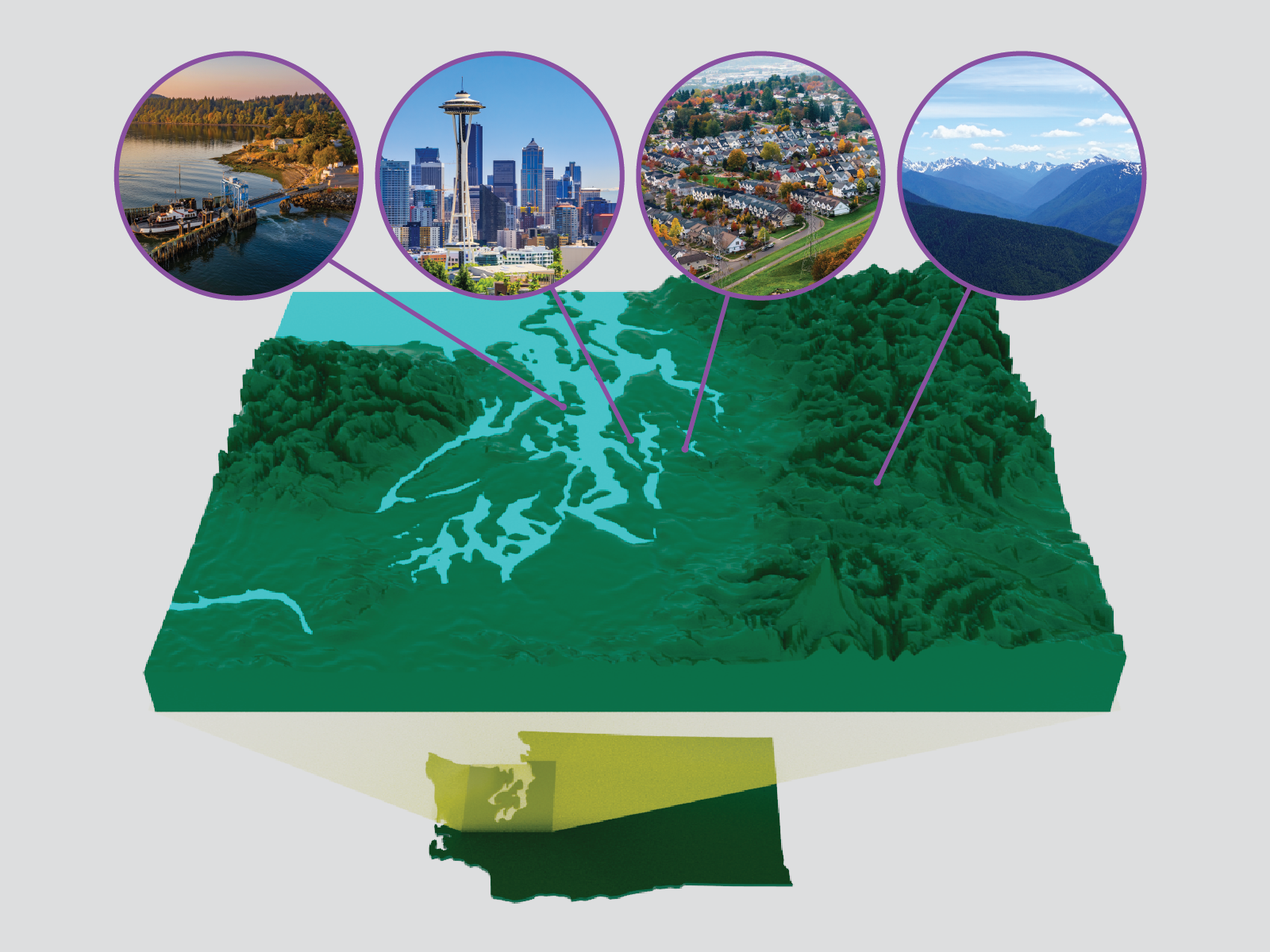Exploring Multiscale Earth System and Human–Earth System Dynamics in the Puget Sound Region
A new report, based on a community workshop and literature review, summarizes some of the biggest challenges in understanding and modeling Earth system and human–Earth system dynamics in the Puget Sound region

The Puget Sound region presents opportunities to explore a variety of natural and human system processes and interactions shaped by complex geographic, hydroclimatic, and landscape characteristics.
(Image by Cortland Johnson | Pacific Northwest National Laboratory)
The Science
Puget Sound is the second-largest estuary in the United States and is surrounded by major mountain ranges as well as a highly populated coastal plain. The region’s complex hydroclimate is strongly influenced by Pacific Ocean weather systems and climate patterns, complex topography, a unique land use history, and strong rural-to-urban gradients. These features make the Puget Sound region a natural laboratory for studying numerous complex Earth system processes and human–Earth system interactions.
The Impact
The Puget Sound scoping study report summarizes current knowledge and highlights key research opportunities within and across atmospheric, terrestrial, coastal, and human systems in the region. There are also sections devoted to understanding and modeling different extreme events, including heat waves, extreme precipitation, flooding, droughts, and wildfires. While the emphasis is on processes and interactions that are important for the Puget Sound region and its inhabitants, many of these topics are also relevant to other regions around the world, so addressing them would lead to transferable knowledge and capabilities.
Summary
To better understand the key research opportunities in the region, the Department of Energy, Office of Science, Biological and Environmental Research (BER) program initiated a one-year scoping study led by Pacific Northwest National Laboratory. The study team engaged with a scientific steering committee composed of regional experts, reviewed and analyzed over 200 studies, and convened a multi-day workshop that involved over 60 regional and topical experts from a wide range of institutions toward building a consensus and building future transferability of knowledge and modeling capabilities. The scoping study report documents the current state of the science; discusses gaps in modeling capabilities, measurements, and data; and highlights key research needs in Earth system modeling, regional climate simulation and analysis, and multisectoral dynamics. This work thus adds important perspectives on improving our scientific understanding and ability to predict the evolution of complex coastal systems.
PNNL Contact
Ning Sun, Pacific Northwest National Laboratory, ning.sun@pnnl.gov
Funding
This research was conducted through the Puget Sound Scoping and Pilot Study project and was supported by three BER/Earth and Environmental Systems Modeling program areas—Earth System Model Development, Regional and Global Model Analysis, and MultiSector Dynamics.
Published: February 17, 2023
Voisin, N., Rose, D. J., Broman, D. P., Sun, N., and Kraucunas, I. P. 2023. Exploring Multiscale Earth System and Human-Earth System Dynamics in the Puget Sound Region. United States: N. p., Web. doi:10.2172/1906804. PNNL-33801.